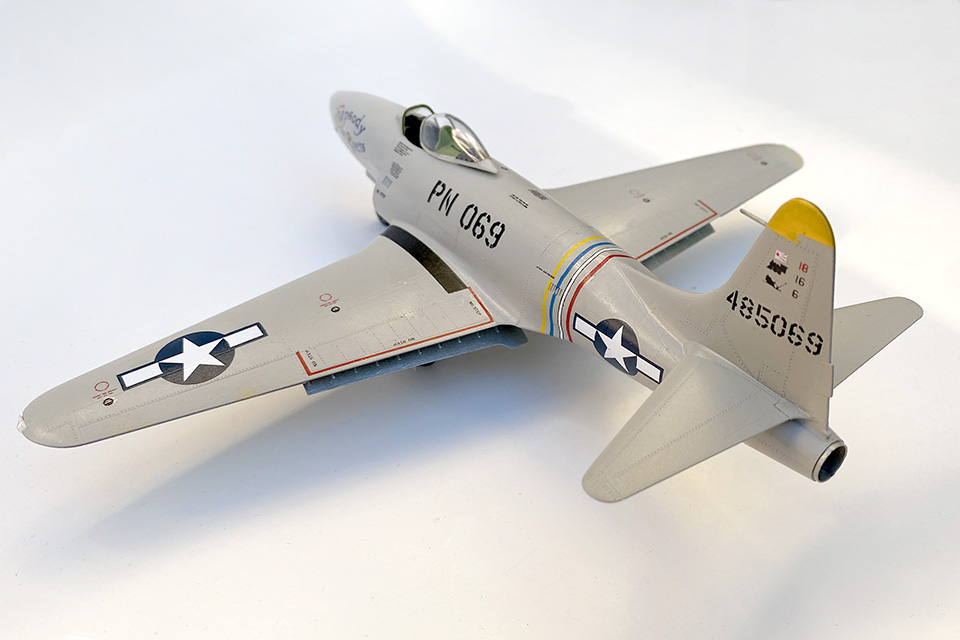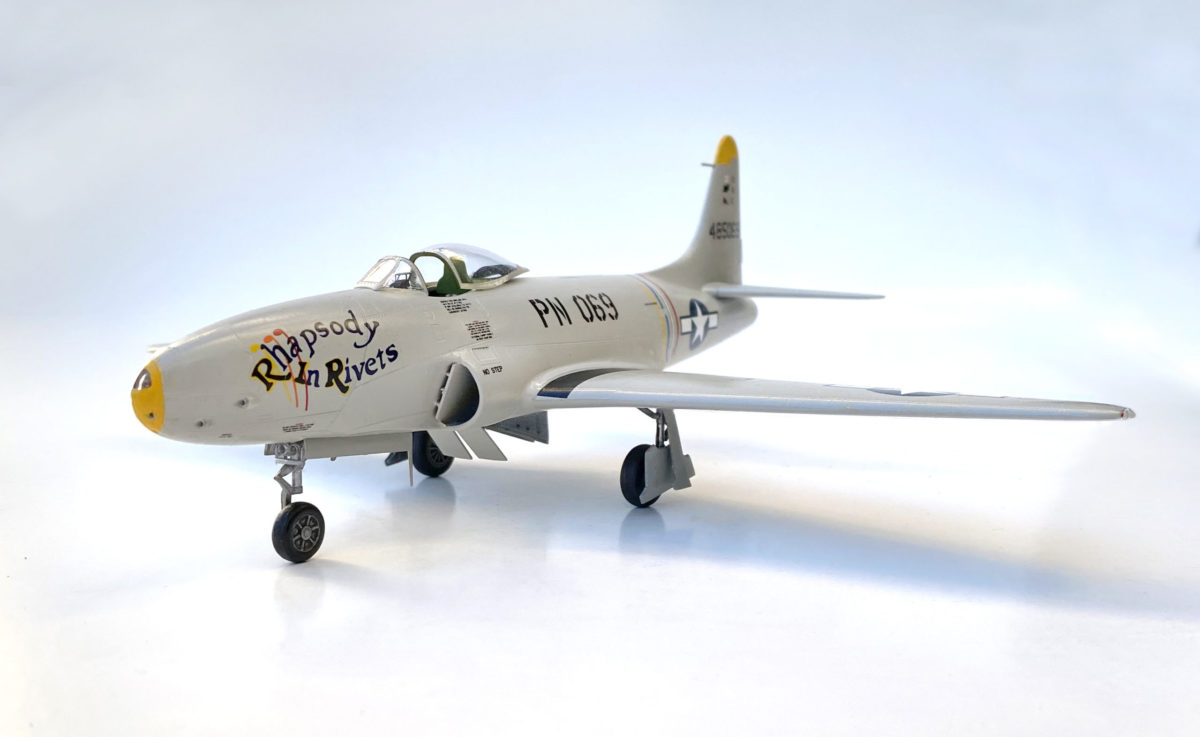In 2013 Hobby Boss released a Lockheed F-80A Shooting Star, the first in a series of three different versions that also included an RF-80 and an F-80C. Technically speaking, they’re all the same kit, with the exception of a few new parts for the reconnaissance nose section of the RF-80. However, with a few minor changes, the F-80A can be backdated to depict an earlier P-80A.
Initial production versions of the P-80A did not include an ejection seat, something that was still rather new at the time. A gas-operated, first-generation seat would become standard equipment in later models. The airplane was also not equipped with a radar in the nose, sporting only a small landing light above the six .50-caliber nose-mounted machine guns. Correcting these two small areas will go a long way to creating the look of one of the first production models of this iconic fighter.
Start with the cockpit, painting it interior chromate green (FS 34151). Replace the very nice seven-piece ejection seat with a simpler World War II–style seat and harness. A resin seat from the “spares box,” originally meant for a P-47, will do the trick. Behind the pilot, a simple armored headrest can be cut from plastic card. The cockpit assembly sits on top of the nose gear wheel well along with the nose gear strut.
Place the six machine gun barrels into their corresponding slots on the inside of either side of the nose. Install the intake plates (parts A4 and A5) and sandwich the completed cockpit and wheel well between the two halves of the forward fuselage. Use simple white school glue to help anchor a number of small lead fishing weights in the nose to prevent the airplane from becoming a “tail sitter.” Remember the rule of thumb that when you think you have enough weight, add more.
The kit is designed to give the builder a choice in displaying the model with the rear section removed to show off the early jet engine or as a complete jet. To assemble it in one piece, discard part E19 to help lighten the rear of the airplane. Assemble the two rear fuselage pieces and add the interior exhaust pipe. Add the horizontal stabilizers and attach the completed tail to the forward fuselage section.
On to the wings. Cement the pieces that make up the landing gear bays into their positions on the lower section of the wing, painting them interior chromate green. Before attaching the pieces of the upper wing, dry fit the assembly to the fuselage. The fit is tight and sanding along the wing root edge will be needed to ensure a hint of dihedral. Do not use the underwing hardpoints—save the 500-pound bombs and the larger “Misawa” drop tanks for your Korean War–era F-80C. Attach the wings to the fuselage and fill and sand where needed, then set the completed assembly aside to dry.

Put together the landing gear, painting the tires a “rubber” black color and the hubs and struts aluminum. Paint the interior of the landing gear doors aluminum as well.
Early production models of the Shooting Star were painted in an overall pearl-gray color (approximately FS 26622). To replicate the single landing light in the nose, use a liquid mask, brushing over the small area on part 62, one of the kit’s clear parts. The piece fits neatly onto the nose of the airplane. Refer to your research to get the size and shape of the landing light area correct.
After painting the model and adding a coat of gloss varnish, it’s time for markings. Use the kit decals for the standard stencils and other basic markings. Weathering should be minimal; these were new and well-maintained jets.
Back to the spares box for a set of aftermarket decals. Super Scale set 48-35 has markings for the P-80A Rhapsody in Rivets, belonging to 412th Fighter Group commander Colonel Bruce K. Holloway. In May 1946, the group was tasked with showing off their sleek new fighters, crisscrossing the country. Holloway, an ace in the Pacific during World War II, displayed his combat victories on the tail of his fighter, as did many of his pilots, all combat veterans.
With decals complete and hit with a light coat of clear varnish, attach the pair of flaps to their positions on the lower wing. Install the landing gear and the two small speed brakes underneath the airplane. The main gear doors are a two-piece affair, with one part attached to the wing and a second piece attached to the gear strut and tire. Glue in place the single antenna just behind the nose gear bay. The delicate pitot tube, normally seen attached to the leading edge of an airplane’s wing, is located on the forward edge of the rudder.
Mask and paint the bubble canopy, attaching the finished pieces to the cockpit. Pose the canopy slid back to show off the detail in the cockpit. With the cockpit canopy in place, your Lockheed P-80A is now ready to display with your collection of early jet aircraft.





